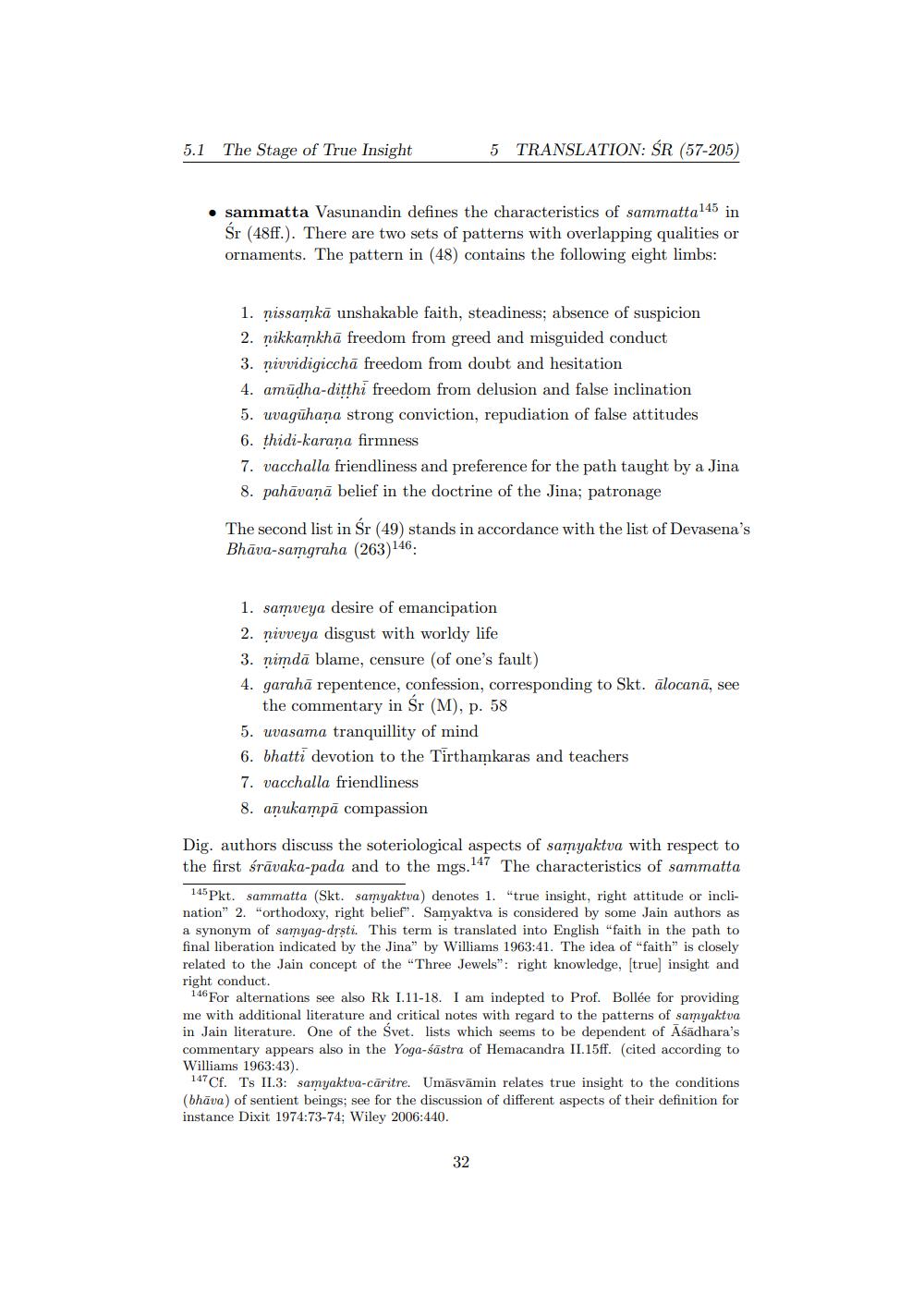________________
5.1
The Stage of True Insight
5 TRANSLATION: ŚR (57-205)
• sammatta Vasunandin defines the characteristics of sammatta 145 in
Sr (48ff.). There are two sets of patterns with overlapping qualities or ornaments. The pattern in (48) contains the following eight limbs:
1. rissamkā unshakable faith, steadiness; absence of suspicion 2. nikkamkhā freedom from greed and misguided conduct 3. nivvidigiccha freedom from doubt and hesitation 4. amūdha-ditthi freedom from delusion and false inclination 5. uvagūhaņa strong conviction, repudiation of false attitudes 6. thidi-karaņa firmness 7. vacchalla friendliness and preference for the path taught by a Jina 8. pahāvaņā belief in the doctrine of the Jina; patronage
The second list in Sr (49) stands in accordance with the list of Devasena's Bhāva-samgraha (263)146.
1. samveya desire of emancipation 2. nivveya disgust with worldy life 3. nimdā blame, censure (of one's fault) 4. garahā repentence, confession, corresponding to Skt. alocană, see
the commentary in Sr (M), p. 58 5. uvasama tranquillity of mind 6. bhatti devotion to the Tirthamkaras and teachers 7. vacchalla friendliness 8. anukampa compassion
Dig. authors discuss the soteriological aspects of samyaktva with respect to the first śrāvaka-pada and to the mgs. 147 The characteristics of sammatta
145 Pkt. sammatta (Skt. samyaktua) denotes 1. "true insight, right attitude or inclination" 2. "orthodoxy, right belief". Samyaktva is considered by some Jain authors as a synonym of samyag-drsti. This term is translated into English "faith in the path to final liberation indicated by the Jina" by Williams 1963:41. The idea of "faith" is closely related to the Jain concept of the "Three Jewels": right knowledge, (true) insight and right conduct.
146 For alternations see also Rk 1.11-18. I am indepted to Prof. Bollée for providing me with additional literature and critical notes with regard to the patterns of samyaktva in Jain literature. One of the Svet. lists which seems to be dependent of Asādhara's commentary appears also in the Yoga-śāstra of Hemacandra II.15ff. (cited according to Williams 1963:43).
147Cf. Ts II.3: samyaktua-cāritre. Umāsvāmin relates true insight to the conditions (bhāva) of sentient beings; see for the discussion of different aspects of their definition for instance Dixit 1974:73-74; Wiley 2006:440.
32




